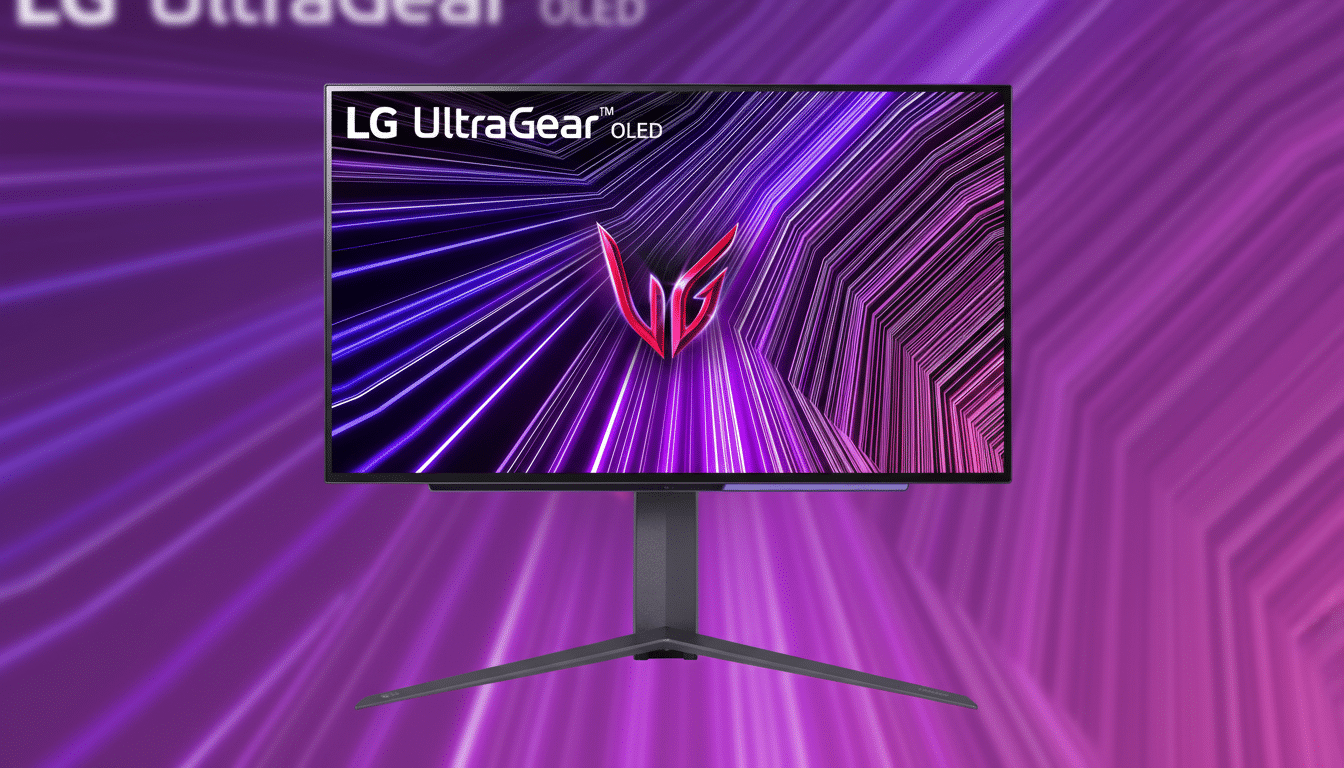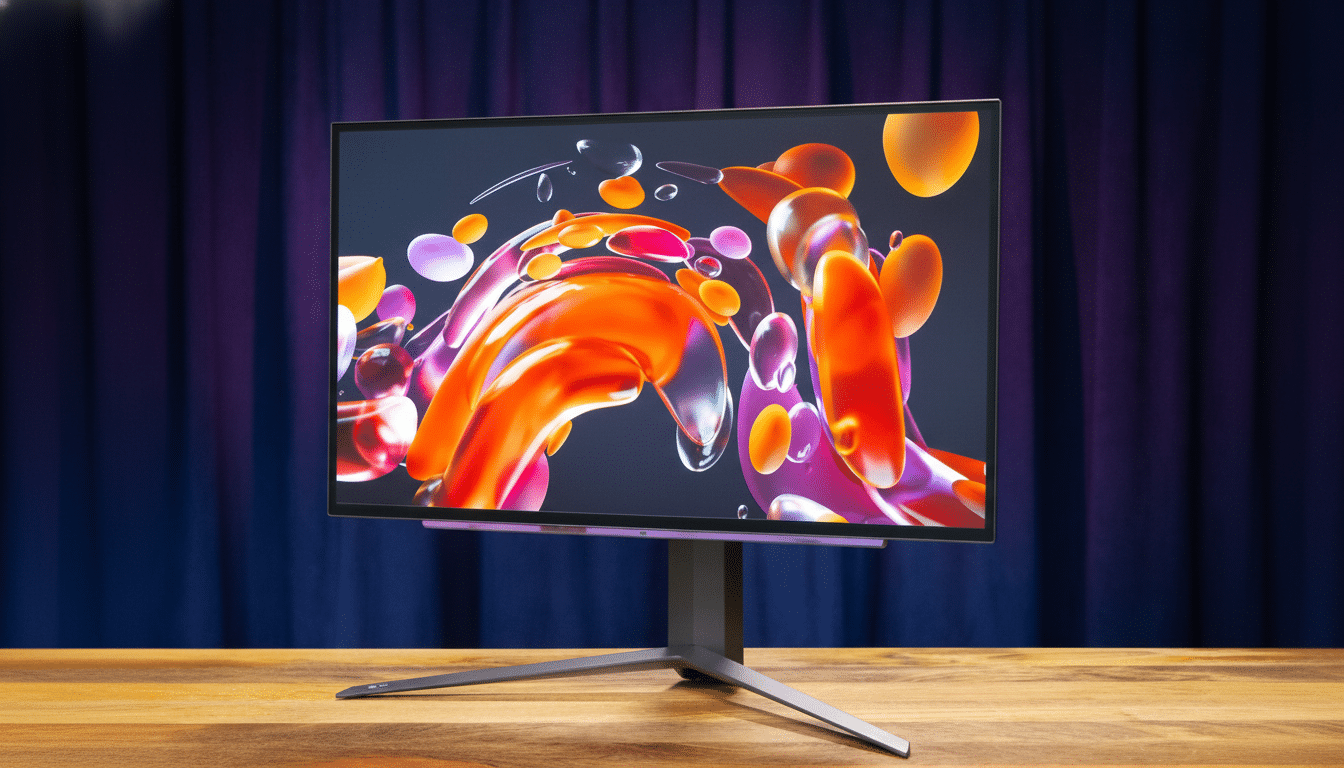The 27-inch LG UltraGear OLED gaming monitor has fallen to $499.99 at a major retailer, which is $400 off from its regular $899.99 list price. That 44% discount represents the lowest price ever widely available on LG’s flagship 27-inch QHD display, a cutthroat deal that means top-end screen tech is now available for midrange money.
For gamers hungry for instantaneous response, inky blacks, and high-refresh silkiness, this is the sort of deal that completely reconceives a setup overnight. The price can vary around peak shopping times, but at this level it embarrasses many competing premium IPS displays while tying or beating most OLED sales that we’ve tracked this year.

Why This LG UltraGear OLED Monitor Deal Stands Out
OLEDs remain a top-shelf technology in the gaming monitor realm because they address the two biggest bugbears that LCDs have to deal with: contrast and response time.
With per-pixel lighting, OLED provides virtually infinite contrast and true black with no edge glow or gray wash. Combine that with a 240Hz refresh rate at 2560×1440 and a stated 0.03ms gray-to-gray response time, and you get the kind of motion clarity that esports competitors and fast-action fans can literally feel.
At that price, you’re forking over less than what most high-end IPS panels charge, but in return you’ll reportedly have access to FreeSync Premium Pro and G-SYNC Compatible VRR support. An anti-glare, low-reflection coating is used on the display surface, and it can handle HDR10 content. RTINGS and TFTCentral independent testers have marveled at LG’s 27-inch UltraGear OLEDs for their class-leading response and general HDR highlight performance, usually measuring peak brightness in small windows as high as the mid-600-nit range—more than bright enough to ensure those specular highlights really pop in dark scenes.
Key Specs That Matter for LG’s 27-inch OLED Monitor
- Speed and smoothness: QHD at up to 240Hz with adaptive sync makes frame pacing very tight and removes areas of tearing when connected to a compatible video card. And, thanks to the sub-1ms response and OLED’s near-instant pixel transition times, it provides cleaner motion than most fast IPS panels at similar refresh rates.
- Color and contrast: It covers about 98% of DCI-P3, with per-pixel dimming for depth and dimensionality that you won’t find on edge-lit or even many FALD designs. Games such as Cyberpunk 2077, Diablo IV, and Alan Wake 2 benefit from OLED’s shadow detail and HDR contrast.
- Comfort and connect: The 27-inch chassis features a height/swivel/tilt adjustable stand as well as VESA mounting. LG’s anti-glare, low-reflection treatment subdues bright room reflections compared to other OLED TVs, while still achieving a level of brightness suitable for most room conditions and content genres.
- Connectivity and features: Look for DisplayPort 1.4, dual HDMI 2.1 for 1440p high-refresh console support, and a USB hub in most configurations in this line. LG’s OLED Care suite—which (with very heavy desktop use) is something I hope to test in the future.
How It Compares Now Against OLED and IPS Rivals
Alienware’s 27-inch 480Hz OLED (AW2725DF), available at the premium end, pushes motion clarity even further but often sells for $899 to $999. As an example, I see ASUS’s ROG Swift PG27AQDM, a 27-inch 240Hz OLED with great reviews, regularly get to about $699 on sale. Against those, $499 for LG’s 27-inch OLED is a steal—unless you need 480Hz.

Fast IPS options like the ASUS TUF VG27AQ or Gigabyte M27Q come close in the $200 to $300 range, but they simply can’t deliver OLED’s black levels, pixel response, or HDR pop. If you play plenty of dark, cinematic games and/or competitive shooters in which motion clarity is crucial, OLED is an obvious step up.
Who Should Buy This 27-inch LG UltraGear OLED Monitor
If you’re a PC gamer with 1440p and high frame rates on the brain, this is going to get the most out of your panel, especially in shooters and racers where lower latency and clearer motion equal an actual advantage. The additional dynamic range of HDR and 120Hz VRR support also benefits console users on PS5 and Xbox Series X.
And those whose work depends on accurate color will appreciate the wide-gamut display, although it, like any other display, should be calibrated for color-critical work. If you plant your rear end in a very bright, sun-drenched room all day long, understand that OLED SDR brightness isn’t on par with many IPS monitors even if the anti-glare does help diffuse reflections.
Before You Click Buy, More Cash-Saving Advice to Know
Confirm the exact model number (27GR95QE-B vs. 27GS95QE) to verify 240Hz spec, port layout, and included stand features. Check the retailer’s return period and LG’s panel warranty terms on OLED. Make sure that your GPU is able to keep up and consistently produce high frame rates at 1440p, and don’t forget to activate both VRR and HDR in both your graphics card control panel and Windows’ display and video HDR settings; your monitor won’t be G-SYNC Compatible unless you do.
Bottom line: At $499.99, this is the best price we’ve seen for LG’s 27-inch UltraGear OLED. If you’ve been holding out for a proper next-gen monitor upgrade without the usual OLED premium, then now’s your time to strike.

